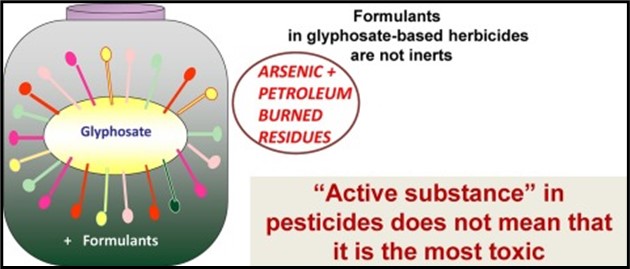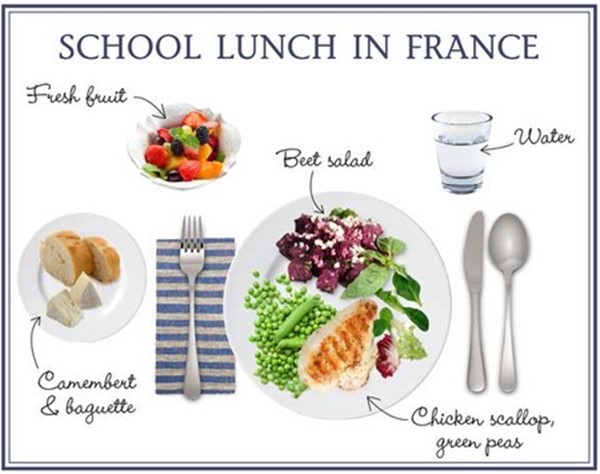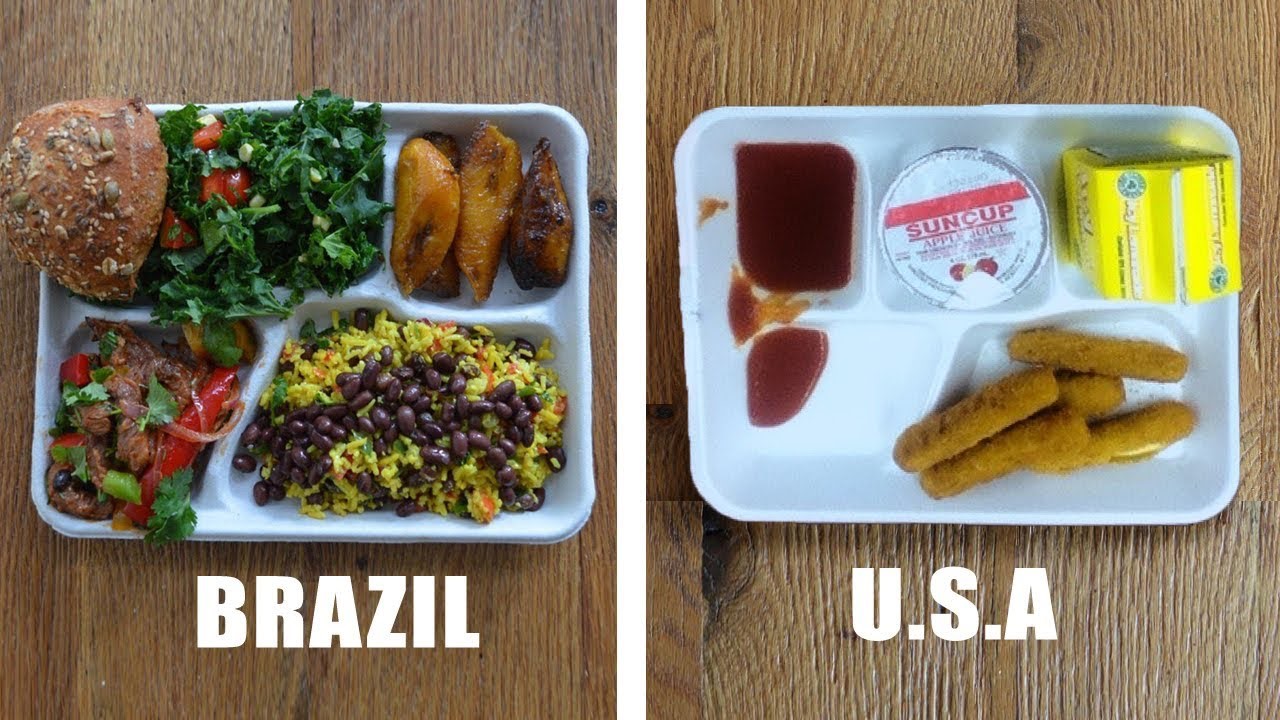Rhetoric, regulatory capture, and the lack of governmental action have created and fueled one of the greatest crimes of the times which is the allowance and acceptance of the chronic poisoning of our children. Although the root causes of this health-crisis-tsunami can be blamed on many factors, the overarching culprit began with the introduction of genetically modified organisms (GMOs) in the 1990s, developed with their associated pesticides. The usage of a greater variety of GMOs in combination with more toxic pesticides has only been increasing secondary to weed resistance. Coupled with companies profiteering from the patent-parade of more and more genetically engineered foods, this is the cocktail for the present health disaster played out in real-time.
The end result is that the state of our children’s health is the true pandemic.
A Look at the Stats
According to a research publication in 2011, 54% of American children were diagnosed with a chronic health condition. A recent examination of the statistics reveals startling information regarding the status of our children’s health:
- 1 in 6 to 1 in 8 children have asthma (higher in African American and Latino children
- 1 in 5 children have eczema, often affecting 60% of infants
- 2-3 in 6 children have seasonal allergies (many children believe this is typical, with ‘sick being the new normal’)
- 1 in 3 children have food intolerance and 1 in 12 children have a “true” food allergy
- 1 in 3-5 children are overweight, variable by state in which they reside
- Additionally, educators, legislators, and practitioners cannot ignore the elephant in the room: The unprecedented rise of Autism Spectrum Disorder (ASD) in our children. Many of those affected have now become adults, so the issue has transcended into the population at large. In the short time between the years from 2020-23 alone, ASD rose significantly and the following numbers should sound the alarm: 1 in 22 children (CDC, 2023) in California and 1 in 36 children (CDC, 2023) are now on the autism spectrum. These numbers do not address the millions of children also experiencing ADHD, neurocognitive/neurodevelopmental disorders, mood dysregulation, and anxiety/depression. Diagnoses are not pigeon-holed, and many children may cross-over manifesting elements of different disorders. It is a hot mess.
This is an incomplete list of disorders, and nor does it acknowledge the millions of children who are undiagnosed, many lacking resources and support.
Covid Impacts
There is no longer just one elephant in the room, but the herd. The Covid Era has ushered in layered and more complicated issues upon our children, reflected in a decline their well-being. Several years of social isolation from peers, masking, closure of schools and childcare centers, reduced access to playgrounds, and overall familial stress have fueled a national mental health crisis. These changes also were noted in the behavior of children, also documented in their microbiome as well. (The microbiome is directly responsible for the development of immune function, the first line of defense for detoxification, production of vitamins and neurotransmitters, etc.) During the early stages of a child’s life particularly in the first 3 years, the gut microbiome has been shown to be shaped by environmental influences. These changes impact future mental and physical health throughout the child’s life.
 Image credit: Sandra Montanez/Getty
Image credit: Sandra Montanez/Getty
Children and Mental Health
There are definable factors that have changed mental health in children during the Covid Era. The effects on the microbiome have been mentioned, and this is important in terms of understanding the relationship between the gut and the brain, referred to as the gut-brain axis. Additionally, the factors that have created the increase in mental health stressors include:
- Disruption of routines
- Social disconnection
- Increased stress in parents and family members
- Messaging regarding continual dangers and threats to once normal activities
- Loss and grief of important relationships outside the immediate family
It must be emphasized that children do not have control over their environments, and a year of their lives is extremely significant in the context of their short lives. Recently released data shows that pandemic-related disruptions and mental health in our youth has produced an increase in anxiety and depression, suicidal ideation, and suicidal attempts compared to before the pandemic, exacerbated in vulnerable populations.
A pivotal study from the UK, the Myriad Project, involved more than 28,000 children, 650 teachers, 100 schools, and 20 million data points. They published a comparative analysis of the mental health of thousands of UK secondary school pupils presently to those prior to the Covid pandemic. A summary of their findings is concerning:
- Young people who went through the pandemic were more likely to experience increased depression, social, emotional and behavioral difficulties and worsening general mental well-being.
- While mental health declined in both groups over time, those in the pandemic experienced a worsening in their mental health:
- Cases of depression increased 8.5% in those going through the pandemic versus 0.3% in the pre-pandemic group.
- Cases of high/very high social, emotional and behavioral difficulties increased 7.9% in the pandemic cohort vs 3.5% in the pre-pandemic cohort.
- Cases of possible/probable mental health difficulties increased 12.8% in the pandemic group versus 4.5% in the pre-pandemic group.
- Girls and those who were initially at low risk of mental health difficulties experienced greater deteriorations during the pandemic.
- Having a positive school climate, good relationships at home and having a friend to turn to for support during lock-down were protective factors.
- Even partial school attendance during lock-down was better for the subsequent adjustment when coming back to school than no attendance at all.
- The financial impact of the increase in mental health costs soared 26% higher during the pandemic than previously, led by anxiety and ADHD, recently published in the Journal of the American Medical Association. Additionally, Telehealth services were used 30 times more often than prior to the pandemic.
Back to School
It is clear that children going back to school is a key factor for the recapture of overall health losses sustained during the Covid pandemic The message here is that the optimization of the school environment is a essential in regaining children’s well-being, and reversing the disastrous mental health deteriorations experienced. One of the key ways to regain and strengthen the health of our children is via nutrition.
School nutrition is one of the best ways to support children’s transition back-to-school and back-to-health.
Optimal nutrition in children’s diets can used as a measure of health resilience, (especially during peak viral seasons). Maximizing nutrition impacts affect every aspect of a child’s health, particularly in regard to learning. An adequate amount of minerals (i.e., iron, zinc, magnesium), B vitamins, omega 3s, and quality macronutrients in terms of proteins, fats, and carbohydrates, will improve the learning capacity of children. Many American children receive the bulk of their meals from school lunches.
The National School Lunch Program (NSLP) provides low-cost or free lunches to children, operating in over 100,000 schools/child care facilities. Many of the increased meals provided during the Pandemic, have since expired in 2022. Common sense dictates that participation in the USDA’s school lunch program can significantly reduce food scarcity facing many of America’s youth. Children from homes with food insecurity are more likely to eat school meals, receiving the majority of their nutrition from the meals provided.
The question is do the school lunches provide the necessary nutrition to feed children, especially those children who are more vulnerable? Presently, school meals must meet Federal nutrition standards. Those dietary guidelines published in the 2020-2025 Executive Summary state the following:
“…Nutritional needs should be met primarily from foods and beverages—specifically, nutrient-dense foods and beverages. Nutrient-dense foods provide vitamins, minerals, and other health-promoting components and have no or little added sugars, saturated fat, and sodium. A healthy dietary pattern consists of nutrient-dense forms of foods and beverages across all food groups, in recommended amounts, and within calorie limits.
The core elements that make up a healthy dietary pattern include:
- Vegetables of all types—dark green; red and orange; beans, peas, and lentils; starchy; and other vegetables
- Fruits, especially whole fruit
- Grains, at least half of which are whole grain
- Dairy, including fat-free or low-fat milk, yogurt, and cheese, and/or lactose-free versions and fortified soy beverages and yogurt as alternatives
- Protein foods, including lean meats, poultry, and eggs; seafood; beans, peas, and lentils; and nuts, seeds, and soy products
- Oils, including vegetable oils and oils in food, such as seafood and nuts”
This is an excellent summary of the nutritional needs of our children and should be commended in the government’s approach to school-based nutrition.
However, is this what our children are actually receiving in school lunches?

Moms Across America National School Lunch Testing Study
The nonprofit organization, Moms Across America (MAA) in Sept. 2022, published their own research regarding what is actually in school meals, disproportionately feeding underserved children. Forty-three school lunches were sampled from across the US. The MAA findings are stunning:
- 95.3% of the school lunch items contained carcinogenic, endocrine disrupting, and liver disease-causing glyphosate, as well as its toxic breakdown product, AMPA.
- 74% of the samples contained at least one of 29 harmful pesticides.
- 4 Veterinary drugs and hormones were found in 9 school lunches samples at levels up to 130.76 ng/g.
- 100% of the school lunch samples contained heavy metals at levels up to 6,293 X higher than the EPA’s maximum levels allowed in drinking water.
- The majority of the samples were abysmally low in nutrients.
School lunches contain many genetically modified foods, such as corn, soy, canola and soybean oils, and sugar from sugar beets. GMO foods, designed to resist the spraying of pesticides (Roundup®-ready) are heavily doused with chemicals such as glyphosate-based herbicides. GMOs are engineered to resist dying from spraying from pesticides. Hence, the weeds die, but not the crops. Many crops (such as wheat, oats, and legumes) are sprayed with an off-label usage of herbicides prior to harvest to dry the crops (applied as a desiccant). Therefore, those foods that our school children commonly consume are even further laden with extremely elevated levels of pesticides.
Additionally, what may not be recognized is that GMOs in themselves cause harm. The first study of the effects of GMOs in rats showed that GMOs (without concomitant pesticides) caused gastrointestinal disruptions, immune dysfunction, and reproductive harm in rats. There have been no peer reviewed, blinded studies regarding the harmful effects of GMOs on human health. Remember, GMOs are not consumed alone, but with their associated pesticides. Our children are the science experiment.
The introduction of GMOs and their associated pesticides are the main drivers of the chronic poisoning of America’s children.
What harms do glyphosate-based herbicides (including the undeclared toxic “inert” ingredients in formulations), pesticides, heavy metals, and veterinary pharmaceuticals found in American school lunches do to our children?
- Half of the gut microbes are sensitive to glyphosate, (a patented antibiotic), causing an imbalance in the microbiome with overgrowth of pathogens, leading to disorders such as irritable bowel syndrome and other gut inflammatory conditions.
- Maternal glyphosate exposure causes ASD in their offspring.
- Glyphosate is a metal chelator, binding the essential minerals needed for children’s optimal function.
- Glyphosate is linked to fatty liver disease (NAFLD), affecting 25% of the worldwide population; approximately 13% of children, and 17% of adolescents. This number rises significantly in children that are overweight. NAFLD is now the most common form of liver disease in children and can silently lead to more serious steatohepatitis, and ultimately fibrosis. Extremely low doses of glyphosate have caused NAFLD.
- Pesticide formulations are contaminated with heavy metals, such as arsenic, chromium, cobalt, lead, and nickel. Heavy metals cause neurocognitive, respiratory, and cardiovascular disorders, as well as cancer. The highest levels in school lunches were cadmium at up to 46.8 micrograms/kg and lead up to 94.4 micrograms/kg.
- Toxic effects of pesticides (glyphosate) on children’s health (i.e., ADHD) has been known and studied in the growing region of the Salinas Valley for 20 years.
- The “inert” formulations (i.e., POEA) increase the toxicity and are endocrine disruptors:
- 29 different pesticides were present in 74% of the school lunches. There are NO studies looking at the toxicity of combinations of pesticide formulations.
- Veterinary drugs and hormones (anti-fungals, anti-parasitics, and birth control hormones) can have innumerable health effects on children.

Pesticides cause a depletion of vital nutrients.
Robust nutrient levels in foods can offset toxic stressors, however, the depletion of nutrients in the soil have resulted in abysmally low levels in the school lunches tested. Our children are overfed and undernourished. Many are constantly hungry since their bodies have not received sufficient nutrition. Livestock have also not fared well since they, too, are fed contaminated grains which lead to illness. Children then consume toxic meat.

Solutions
Changing children’s diets to organic regenerative food creates rapid improvements in children’s health, documented in clinical practice as well as in several research studies.
The Nutrinet Sante study looked at 240,000 individuals whose health improved making dietary changes. Local heroes exist. As documented in What’s Making our Children Sick?, A Central Valley, California family dad living in the heart of pesticide spraying, on the dialysis list, regained kidney function to nearly complete changing from a conventionally grown to an organic regenerative diet.
Our government must do better. Individual states have taken up some action on behalf to the protection of children, including California, with the recent passing of AB 418, banning brominated vegetable oil, potassium bromate, propylparaben, or red dye #3. Although this type of state-directed legislative action is a good first step, it is not enough in terms of immediate action needed to change the course of health-history and protect our children nationally from the assault by the unregulated ingredients of school lunches. Legislation is required at the Federal level in order to provide a national standard. The requirements can look as follows:
- Support local organic, regenerative farms to supply school lunches, which would also address social equity. These strategies are presently being addressed in Wisconsin.
- Support the farm-to-school movement, which is already happening in various states: Pennsylvania, California, Iowa, Minnesota, and Wisconsin.
- Senator Cory Booker is launching a bill to place restrictions on toxic contamination residues in school lunch, matching European standards. The only way to achieve those goals is supplying our children with food from regenerative, organic farmers.
- Support school gardens. Rodale Institute in Kutztown, PA, has already created and implemented a healthy start school curriculum, My First Garden.
- Activating local communities raising healthy food consciousness (Las Vegas, Nevada)
- Support local development, creating neighborhood food networks

The Ask
The expectation is an urgent call-to-action for our policy makers to immediately switch to organic regenerative school lunches for America’s children, reducing pesticides to less that 10 ppb, over the next 3 years. The stronghold of conventional agricultural practices and businesses on our agricultural practices must be ended.
Our children deserve better.



